What cable standards apply to wind turbines?
As the power industry has evolved with increased use of renewable-energy, so have wind-cable industry standards and the types of cables manufactured to meet the requirements of wind applications. The first available wind-cable solutions represented innovative and customized designs to meet performance requirements for increased flexibility and resistance to high-torsion stress, vibration, oils and abrasion.
As the renewable-energy market matures, industry standards organizations are recognizing traditional cables that provide the same long-term performance and reliability as R&D intensive, application-specific, wind-cable constructions.
Early solutions were often regionalized into North America (NA) from IEC designs due to the lack of NA wire and cable standards to support a predominant European wind-turbine manufacturing and design base. For instance, wind turbine OEMs specified cross-linked 90°C rated cables for multi-conductor jacketed power-cable applications supplying auxiliary power within the nacelle. The cables selected were aligned with classifications for power cable (IEC 60502-1 or UL 44) or rubber cord (HD 22.12 or UL 62), carrying different flame ratings. An alternative class of traditional cable insulation found within NA standards (UL 83) known as Type THHN/THWN (PVC/Nylon) offers the same 90°C temperature rating and the higher wet rating available with cross-linked power cable classifications. Only single layer coverings of PVC rated up to 70°C are covered within IEC 60502-1 making this option inadequate for the application.
Currently, both copper and aluminum alloy conductors with thermoset and thermoplastic insulation are generally accepted for wind-turbine applications. But cable guidelines and standardization for renewable-energy applications are improving. Industry standards organizations such as the National Fire Protection Association (NFPA), the Canadian Standards Association (CSA) and Underwriters Laboratories (UL) are recognizing wind-farm cables in publish codes and standards guidelines.
UL 6141, for example, will require that all wiring within a wind turbine accessible to users or service personnel, or running vertically up the tower, be in a raceway and of a cable type listed below with a flame rating such as CT or FT4:
- Outline of Investigation for Flexible Motor Supply Cable and Wind Turbine Tray Cable, UL 2277
- Standard for Power-Limited Circuit Cables, UL 13
- Standard for Optical Fiber Cable, UL 1651
- Standard for Thermoplastic-Insulated Wires and Cables, UL 83, or the Standard for Thermoset-Insulated Wires and Cables, UL 44
- Standard for Medium Voltage Power Cables, UL 1072 Metallic shields will be required for these cables to be compliant with UL 1072
- Standard for Flexible Cords and Cables, UL 62
- Standard for Cables for Non-Power-Limited Fire-Alarm Circuits, UL 1425
- Standard for Metal-Clad Cables, UL 1569
Most traditional North American cable types will soon be specifically permitted within wind-turbine standards, and will effectively level the selection and performance ratings by establishing consistent flame performance.
By: Tim Clancy, Renewables Engineering Manager, General Cable
Filed Under: Cables & connectors, Featured, Turbines

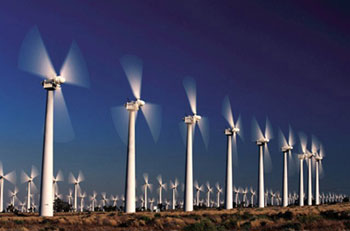
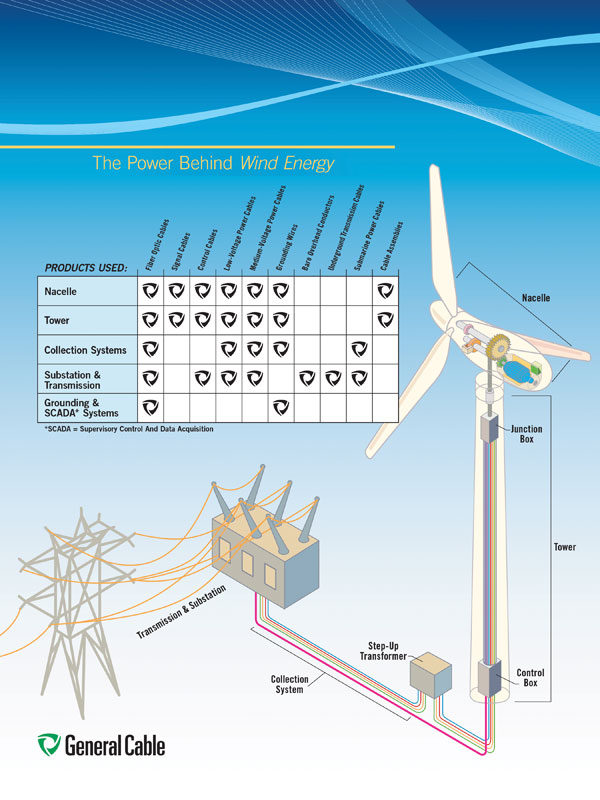
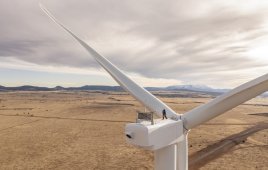

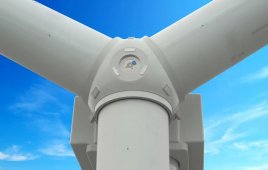
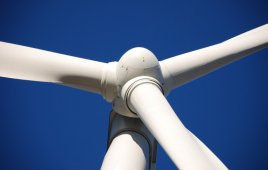
The work environment is very worse, so the requires to the components in wind turbine is very high. Wind turbine slip ring is necessary for wind energy, this slip ring can transfer power and signal, also can add control system, but the maintenance cost is very high, so development a high performance slip ring is essential.
More information: http://www.arslipring.com